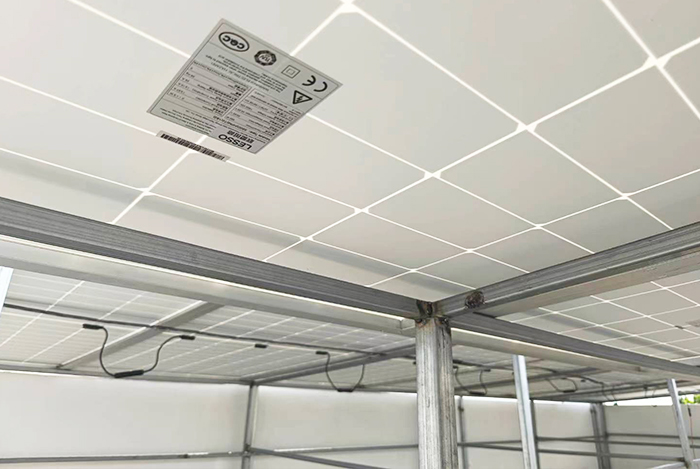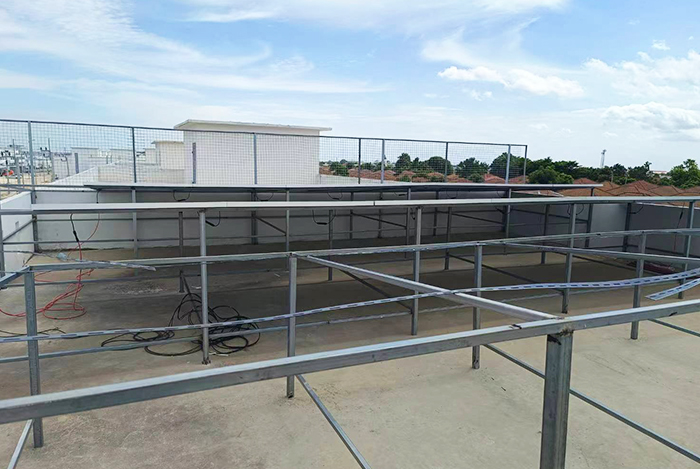With the global focus on renewable energy and ongoing advancements in technology, solar PV mounting structures and accessories, as critical components of solar power stations, are undergoing unprecedented changes. This article explores six key trends in the development of these systems: technological innovation and lightweighting, intelligence and automation, eco-friendliness and sustainability, growing market demand and intensified competition, policy support and internationalization, and customization and concealment.
1. Technological Innovation and Lightweighting
Technological Innovation
Solar PV mounting technology is constantly evolving to adapt to the increasing size and weight of PV modules. Innovations such as wind-resistant structure designs and wind tunnel testing have enhanced the durability and stability of tracking systems under extreme weather conditions. Structural designs of mounting systems are also being optimized, utilizing advanced calculations and algorithms to maximize material efficiency and minimize waste, ultimately enhancing performance and reducing costs.

Lightweighting
Lightweighting is another significant trend in the future of solar PV mounting. The adoption of high-strength, lightweight materials, such as aluminum alloys and carbon fiber, reduces the overall weight of the mounting systems, thereby lowering transportation and installation costs. Additionally, lightweight designs contribute to greater system stability and durability, extending the lifespan of PV installations.
2. Intelligence and Automation
Intelligence
Intelligent mounting systems are a key direction in PV mounting development. Smart tracking systems can automatically adjust the angle of PV modules according to changes in solar irradiance, maximizing solar energy absorption and improving power generation efficiency. By integrating advanced sensors, control systems, and data analysis technologies, intelligent mounting structures can also offer remote monitoring and fault warnings, boosting operation and maintenance efficiency.
Automation
Automation further simplifies the production and installation of PV mounting systems. Automated production lines increase manufacturing efficiency and product quality while reducing labor costs and human error. Automated installation techniques shorten installation time, reduce costs, and accelerate the construction speed of solar power plants.
3. Eco-Friendliness and Sustainability
Eco-Friendliness
Environmental sustainability is increasingly important in the production of PV mounting structures and accessories. Using eco-friendly materials, optimizing production processes, and reducing waste all contribute to minimizing environmental impact. Furthermore, recycling and reusing mounting structures are crucial steps toward sustainable development in the PV industry.
Sustainability
The design and production of PV mounting structures must focus on sustainability. Modular designs, with components that are easy to maintain and replace, can lower the lifecycle cost of PV systems and improve resource utilization. Moreover, increasing the energy efficiency of mounting structures is essential for achieving long-term sustainability.
4. Growing Market Demand and Intensified Competition
Growing Demand
With the surging global demand for renewable energy, the market for PV mounting structures and accessories is expanding rapidly. Particularly in regions with large PV installations, such as China, Europe, and the United States, the market size for PV mounting systems is expected to grow significantly. In the coming years, the PV mounting industry will continue to experience robust growth.
Intensified Competition
As demand grows, competition in the PV mounting industry is also intensifying. Numerous domestic and international companies are entering the market, competing through technological innovation, cost reduction, quality improvement, and service enhancement. The increasing competition will drive industry restructuring, favoring companies with superior technology and strong adaptability, ultimately promoting healthier industry development.
5. Policy Support and Internationalization
Policy Support
Government policies are a crucial driver of growth for the PV mounting industry. Regions like China, Europe, and the United States have implemented supportive measures, such as subsidies, tax incentives, and preferential tariffs for renewable energy projects. These policies create a favorable environment for the PV mounting industry, offering significant opportunities for market expansion.
Internationalization
With globalization accelerating, the PV mounting industry is becoming increasingly international. Domestic companies are expanding into overseas markets, enhancing their competitiveness through technological innovation, brand development, and service improvements. Simultaneously, international players are entering the Chinese market, further intensifying competition.

6. Customization and Concealment
Customization
The demand for customized PV mounting structures and accessories is growing. Since each solar power station has unique conditions and requirements, customized mounting systems are essential to meet specific project needs. Customization enhances product adaptability and competitiveness, satisfying clients' unique demands and preferences.
Concealment
As solar power stations grow in scale and technology advances, the trend toward concealed mounting structures is becoming more pronounced. Through optimized design and material selection, PV mounting structures can be made to blend aesthetically with the surrounding environment, minimizing their visual impact on landscapes.
Conclusion
The PV mounting structures and accessories industry is facing unprecedented opportunities and challenges. In the future, this industry will continue its rapid growth, playing an increasingly vital role in advancing renewable energy development worldwide.







